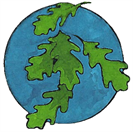


Map courtesy USDA NRCS PLANTS Database
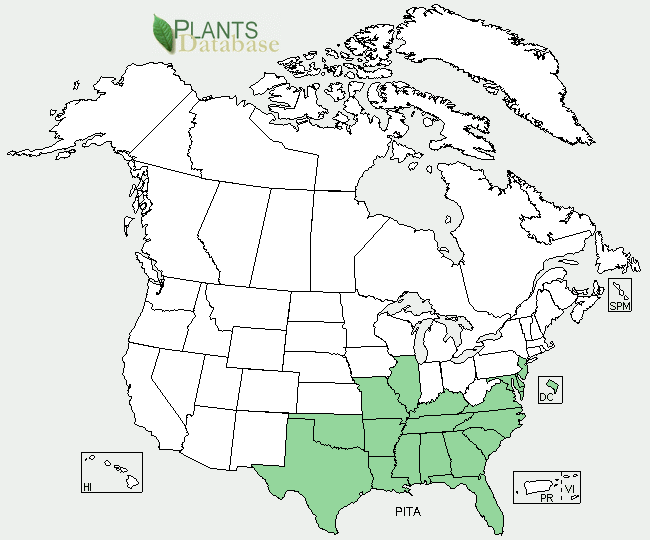
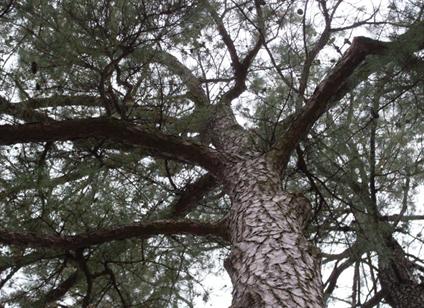
tipped with a small prickle. Every 3-6 years, an abundant seed crop is produced. The seeds, which require cold stratification, are small, brown, single winged, and remain dormant in seedbeds 4 to 8 months until conditions are right. The crown is pyramidal on young trees but becomes dense and somewhat rounded when fully grown. Loblolly pine has a tap root 4-5 feet in length during the early part of its development but eventually utilizes a network of lateral roots reaching 35 inches below the surface. This feature makes mature specimens wind throw resistant despite their height.
Habitat
Pinus taeda requires 35-65 inches of annual rainfall, 150 frost free days and does not usually survive temperatures below -8°F. It has a low drought tolerance and draws heavily on available moisture near growth site, especially during its growth period of spring and summer.
Habitat
Pinus taeda requires 35-65 inches of annual rainfall, 150 frost free days and does not usually survive temperatures below -8°F. It has a low drought tolerance and draws heavily on available moisture near growth site, especially during its growth period of spring and summer.
The preferred site has a pH of 4.0-7.0 and deep, moist, poorly draining soil. It can occupy areas with sandy loams or clay and while it can tolerate just about any soil texture, it has no salinity tolerance. Loblolly pine is often found along stream and river flood plains and is often used for soil stabilization because of root system and fast growth.
Uses
Uses for this native species include lumber, naval and veneer products as well as pulpwood. While not often used in landscape applications, it does have a pleasant aroma. Most often it is used for shade and as a windbreak. If planting for a windbreak, care should be taken when selecting plants that are container grown. Seedlings that are root bound do not typically develop proper root structures. This problem is compounded by the fast growth rate and can lead to the tree being blown down after a few years. As with all pines, turpentine can be distilled from the resin, which in times past has been used to treat a variety of ailments. Respiratory complaints like coughing, bronchitis, common colds, and influenza were eased by steam baths and inhalers. Skin problems, wounds and sores were also treated with poultices and salves. In the late 1800's, it was even used to treat tuberculosis.
Uses
Uses for this native species include lumber, naval and veneer products as well as pulpwood. While not often used in landscape applications, it does have a pleasant aroma. Most often it is used for shade and as a windbreak. If planting for a windbreak, care should be taken when selecting plants that are container grown. Seedlings that are root bound do not typically develop proper root structures. This problem is compounded by the fast growth rate and can lead to the tree being blown down after a few years. As with all pines, turpentine can be distilled from the resin, which in times past has been used to treat a variety of ailments. Respiratory complaints like coughing, bronchitis, common colds, and influenza were eased by steam baths and inhalers. Skin problems, wounds and sores were also treated with poultices and salves. In the late 1800's, it was even used to treat tuberculosis.

Interesting fact: When burnt material from Loblolly Pine decomposes, it increases the nitrogen levels in the soil- a potential low cost alternative for nitrogen fertilization.
Loblolly pine, Pinus taeda, Treesforme image Please see usage requirements
Pests, Diseases, and Elemental
Some insect pests common to Loblolly pine are southern pine beetles, saw flies, pine engraver beetles, pine tipped moths and seedling debarking weevils. There are also environmental agents that adversely affect P.
Some insect pests common to Loblolly pine are southern pine beetles, saw flies, pine engraver beetles, pine tipped moths and seedling debarking weevils. There are also environmental agents that adversely affect P.
Botanical
Hailed as the leading commercial timber tree in the southeast United States, the native Loblolly pine grows rapidly with a straight trunk clear of branches. It reaches 50 feet in just 20 years, and when mature can top 100 feet with a trunk diameter between 2-3 feet. The bark on young trees is usually dark, blackish-brown and scaly. Mature Loblolly pines are more deeply fissured, have large irregular plates and are reddish-brown. Slender yellow green needles are about 9 inches long. They are stiff, in bundles of 3 (rarely 2) and make quality litter. Female cones are oval to conical, between 2-6 inches long and light brownish-gray in color. Each scale is
Hailed as the leading commercial timber tree in the southeast United States, the native Loblolly pine grows rapidly with a straight trunk clear of branches. It reaches 50 feet in just 20 years, and when mature can top 100 feet with a trunk diameter between 2-3 feet. The bark on young trees is usually dark, blackish-brown and scaly. Mature Loblolly pines are more deeply fissured, have large irregular plates and are reddish-brown. Slender yellow green needles are about 9 inches long. They are stiff, in bundles of 3 (rarely 2) and make quality litter. Female cones are oval to conical, between 2-6 inches long and light brownish-gray in color. Each scale is




Friday, May 30, 2025

™
|
|
|
|
|
| A-Z scientific | ||
| A-Z by Common Name | ||
| Families | ||
| Browse by State | ||
| Rare or Endangered Species | ||
| Trees_with_Special_Uses | ||
| Tallest and Biggest |
| Aceraceae Maple Family | ||
| Anacardiaceae Sumac Family | ||
| Annonaceae Custard Apple Family | ||
| Aquifoliaceae Holly Family | ||
| Arecaceae, Palm Family | ||
| Betulaceae Birch family | ||
| Bignoniaceae Trumpet Creeper Family | ||
| Burseraceae Frankincense Family | ||
| Caprifoliaceae Honeysuckle Family | ||
| Chrysobalanaceae Coco-plum Family | ||
| Cornaceae Dogwood Family | ||
| Cupressaceae Cypress Family | ||
| Cyrillaceae Cyrilla Family | ||
| Ebenaceae Ebony Family | ||
| Ericaceae Heath Family | ||
| Fabaceae Pea Family | ||
| Fagaceae Beech Family | ||
| Hamamelidaceae Witch Hazel Ffamily | ||
| Hippocastanaceae Horse Chestnut Family | ||
| Juglandaceae Walnut Family | ||
| Lauraceae Laurel Family | ||
| Leitneriaceae Corkwood Family | ||
| Magnoliaceae Magnolia Family | ||
| Meliaceae Mahogany Family | ||
| Moraceae Mulberry Family | ||
| Myricaceae Bayberry Family | ||
| Myrsinaceae Myrsine Family | ||
| Myrtaceae Myrtle Family | ||
| Nyctaginaceae Four Oclock Family | ||
| Olacaceae Olax Family | ||
| Oleaceae Olive Family | ||
| Pinaceae Pine Family | ||
| Platanaceae Plane Tree Family | ||
| Polygonaceae Buckwheat Family | ||
| Rhamnaceae Buckthorn Family | ||
| Rosaceae Rose Family | ||
| Rubiaceae Madder Family | ||
| Rutaceae Rue Family | ||
| Salicaceae Willow Family | ||
| Sapindaceae Soapberry Family | ||
| Sapotaceae Sapodilla Family | ||
| Simaroubaceae Quassia Family | ||
| Styracaceae Storax Family | ||
| Symplocaceae Sweetleaf Family | ||
| Theaceae Tea Family | ||
| Tiliaceae Lindon Family | ||
| Ulmaceae Elm Family | ||
| Taxaceae Yew Family | ||
| Yucca Family |
| Maple A-Z |
| sumac_family_a-z |
| custard_apple_family_a-z |
| holly_trees_a-z |
| palm_family_a-z |
| birch_family_a-z |
| trumpet_creeper_family_a-z |
| honeysuckle_family_a-z |
| dogwood_family_a-z |
| cypress_family_a-z |
| heath_family_a-z |
| pea_family_a-z |
| beech_family_a-z |
| walnut_family_a-z |
| magnolia_family_a-z |
| olive_family_a-z |
| rose_family_a-z |
| willow_family_a-z |
| franklinia |
| elm_family_a-z |
| Federal List | ||
| State Lists | ||
| Invasive_species |
| Restoration of the American Chestnut | ||
| Restoration of the American Elm | ||
| Sustainable Forestry |
| Contact Us | ||
| Our Contributors | ||
| Photo of the Month | ||
| Usage Requirements | ||
| FAQ | ||
| Report a Broken Link |
| photo_submission |
| Photo Store |
Sources:
Trees of North America- A guide to field identification-a Golden Field Guide from St. Martin's Press © 2002 By C. Frank Brockman p.32
The Encyclopedia of North American Trees by Sam Benvie. Firefly Books Ltd.,2000 Buffalo, NY © 2000 Sam Benvie p.184
Diseases of Trees and Shrubs, 2nd edition, by Wayne A. Sinclair and Howard H. Lyon, © 2005 Cornell University, Cornell University Press, p. 296, 340, 482
USDA, NRCS. 2011. The PLANTS Database (<http://plants.usda.gov/>, 22 August 2011). National Plant Data Team, Greensboro, NC 27401-4901
Cary, Jennifer H.1992. Pinus taeda. In: Fire Effects Information System, [Online]. U.S. Department of Agriculture, Forest Service, Rocky Mountain Research Station, Fire Sciences Laboratory (Producer). Available: http://www.fs.fed.us/database/feis/ [2011, August 22].
Trees of North America- A guide to field identification-a Golden Field Guide from St. Martin's Press © 2002 By C. Frank Brockman p.32
The Encyclopedia of North American Trees by Sam Benvie. Firefly Books Ltd.,2000 Buffalo, NY © 2000 Sam Benvie p.184
Diseases of Trees and Shrubs, 2nd edition, by Wayne A. Sinclair and Howard H. Lyon, © 2005 Cornell University, Cornell University Press, p. 296, 340, 482
USDA, NRCS. 2011. The PLANTS Database (<http://plants.usda.gov/>, 22 August 2011). National Plant Data Team, Greensboro, NC 27401-4901
Cary, Jennifer H.1992. Pinus taeda. In: Fire Effects Information System, [Online]. U.S. Department of Agriculture, Forest Service, Rocky Mountain Research Station, Fire Sciences Laboratory (Producer). Available: http://www.fs.fed.us/database/feis/ [2011, August 22].

Custom Search
Common names: Bull Pine, Rosemary Pine, Old Field Pine, Shortleaf Pine, North Carolina Pine, Arkansas Pine
State List: AL, AR, DE, FL, GA, IL, KY, LA, MD, MO, MS, NC, NJ, OK, SC, TN, TX, VA
Visit the Image Gallery for more photos
View all North American native pine trees
State List: AL, AR, DE, FL, GA, IL, KY, LA, MD, MO, MS, NC, NJ, OK, SC, TN, TX, VA
Visit the Image Gallery for more photos
View all North American native pine trees
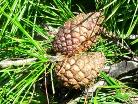
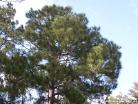
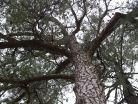
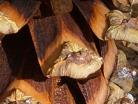
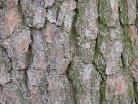
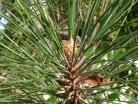
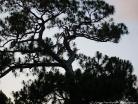
Want to add your tree to our picture gallery? Click here for details!
Tree lists:
•A-Z by scientific
name
•A-Z by common
name
•By Family
For state A-Z list click state name below.
•A-Z by scientific
name
•A-Z by common
name
•By Family
For state A-Z list click state name below.
-Color denotes a tree that is rare or endangered

Loblolly Pine,
Pinus taeda L.
Pinus taeda L.

taeda, such as ozone, to which Loblolly pine is sensitive too. In the absence of visual damage, slowed growth has been detected in this species. While Loblolly pine does well near streams and rivers, and prefers poorly draining soils. It only has an intermediate tolerance to water logged soils. This occurs most often when trees are planted in cut out sections of otherwise concrete covered landscaping designs. Water logged soils result in root damage which leads to the failure of the root system to properly support the rest of the tree once the soil dries out.
Diseases attacking Loblolly pine are numerous, Fusiform rust, Cronartium quercuum f.sp. fusiforme, being of the most concern. Loblolly pine is the second most severely impacted native species (the first being slash pine, P. elliottii). It causes mortality in young trees and seedlings and devalues established, larger trees by creating cankers and galls. There is also annosum root rot, which spreads by root to root contact. Other rots include Black root rot and heart rot Phaeolus schweinitzii, which enters damaged areas or wounds.
Wildlife
This native species is crucial to wildlife as it is an important food source for birds and small mammals. Seedlings are often browse food for deer and rabbits and it provides cover and habitat for birds such as wild turkeys, Northern bobwhites, as well as squirrels. The endangered red-cockaded woodpecker makes it's nests in old growth trees.
Diseases attacking Loblolly pine are numerous, Fusiform rust, Cronartium quercuum f.sp. fusiforme, being of the most concern. Loblolly pine is the second most severely impacted native species (the first being slash pine, P. elliottii). It causes mortality in young trees and seedlings and devalues established, larger trees by creating cankers and galls. There is also annosum root rot, which spreads by root to root contact. Other rots include Black root rot and heart rot Phaeolus schweinitzii, which enters damaged areas or wounds.
Wildlife
This native species is crucial to wildlife as it is an important food source for birds and small mammals. Seedlings are often browse food for deer and rabbits and it provides cover and habitat for birds such as wild turkeys, Northern bobwhites, as well as squirrels. The endangered red-cockaded woodpecker makes it's nests in old growth trees.
Loblolly pine, Pinus taeda, Treesforme image Please see usage requirements
